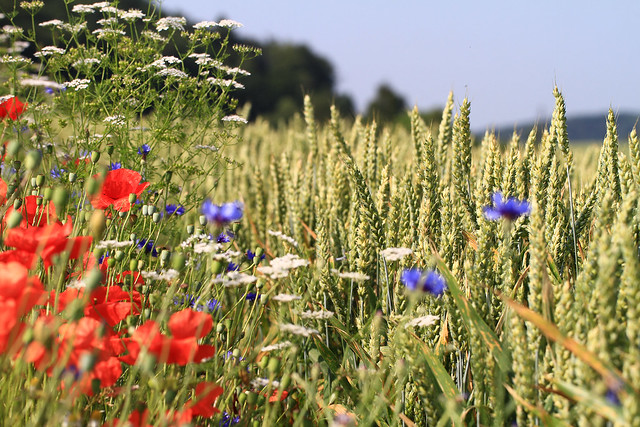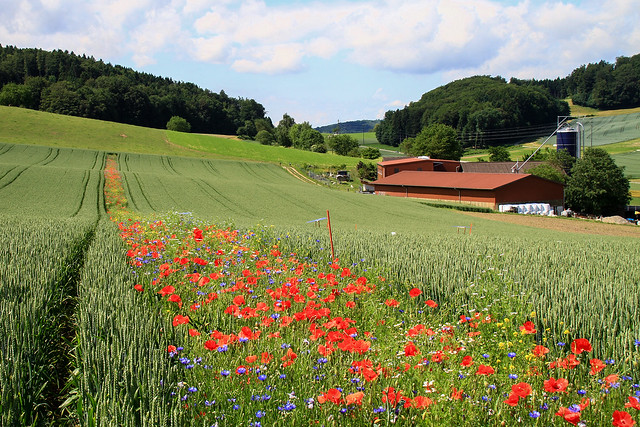
- Better Society -
- 6mins -
- 931 views
Why Farmers Are Using Flowers Instead Of Chemicals To Tackle Pests
To ensure more beneficial bugs visit their fields to feed on pests, some farmers are planting “flower strips” in and around their crops.
“Flower Strips” reduce pests
With mounting evidence about the problems caused by pesticides—including polluting drinking water and killing bees—many of the insect-killers have been taken off the market in the UK and Europe. However, others are still frequently used; and that frequent use makes them less effective, as pests become resistant to the chemicals.
Biological pest control is one way of contributing to the ecological intensification of agriculture. “Flower Strips” can encourage natural antagonists of agricultural pests. This helps to reduce pest infestation and hence damage to agricultural crops, as well as avoiding the use of plant-protection products.
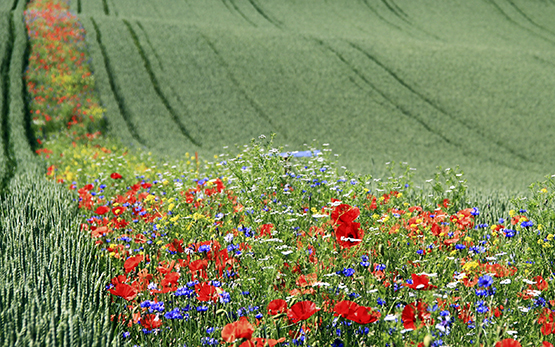
Older organic practices are making a comeback
Some organic farmers are going back to older practices by cultivating an environment where natural pest predators can live. They’re growing flowers amongst their other crops, creating a home for creatures like parasitic wasps, who eat aphids in their larval state. It’s been a common practice to grow flowers around the perimeter of farmland acres, because it encourages biodiversity. But agriculturalists are experimenting with strips of flowers within their crops, creating a highway for bugs to travel farther and cover more ground for pest control.
On one farm near the town of Buckingham, England, a crop of oilseed rape–a plant that would ordinarily make the entire field a solid yellow colour–is planted with long, wide rows of wildflowers in the middle. The field is 1 of 14 sites in a study testing how well the wildflowers attract pest-eating bugs, and how well they could help replace commercial pesticides.
The study also includes borders of wildflowers around each field, something that some farmers have used over the past two decades in the area to promote general biodiversity, not specifically for pest control. But because small bugs can’t travel far, researchers are testing strips of flowers placed in strips in the middle of fields.
Source: FastCompany
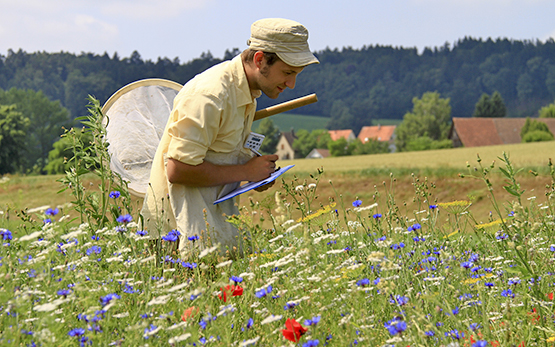
Choosing the right mix of flowers for a crop could increase yield by 10%
Similar studies have tested the same approach in Switzerland, where researchers planted poppies, cilantro, dill, and other flowers along fields of winter wheat.
The plants fed and sheltered insects such as ladybirds that ate the bugs that eat wheat, and ultimately reduced leaf damage 61%. The researchers estimated that choosing the right mix of flowers could increase yield 10%, making it economically self-sustaining or even profitable to keep planting flowers.
While researchers say pesticide use probably won’t be eliminated completely, this approach definitely has its merits. By attracting pest-eating bugs–along with other techniques, like breeding plants that can better resist pests, using technology to better diagnose and forecast pests, and application systems that can apply tiny amounts of pesticide more precisely–pesticide use could be dramatically reduced, and serve as a last line of defense on farms, rather than the first thing farmers reach for.
Source: FastCompany
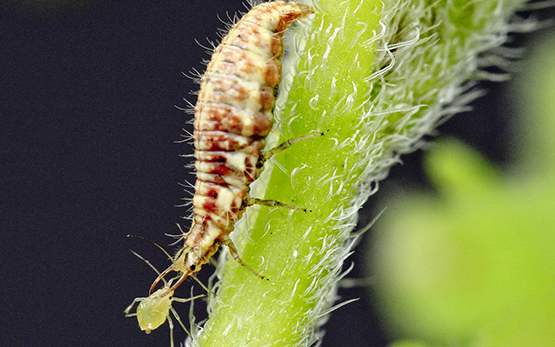
7 Best Plants for Pest Control at Home and in Your Garden
One easy way of keeping pests at bay is to strategically place insect-repelling plants in your garden or inside your home. Insects tend to avoid these plants because essential oils in them work as natural bug repellent. Here are some plants, herbs, and flowers that might offer you some relief during spring and summer season when common pest species are most active!
1. Basil Basil is a great solution for repelling mosquitoes and flies. You can plant this herb near the doors to your home or in outdoor areas. Pests are annoyed with the very smell of this plant and it is sometimes used in insect repellant sprays. Growing basil is extremely easy since you can buy a plant in a container and just plant it in your garden; however, this one-year plant needs a lot of sun and water in order to survive, so be strategic with your placement of it.
2. Lavender: Lavender has been used for centuries to add a sweet smell to homes and clothes drawers. It’s also a wonderful plant for pest control since it can help repel fleas, mosquitoes, and flies. Plant it in sunny areas of your garden or near your house entrance. This plant is easy to maintain since it can basically survive all weather conditions.
3. Citronella: Citronella grass also has essential oils that mosquitoes don’t like. It’s also a good natural repellent for insects which are also annoyed by its smell. This plant can grow up to four feet tall in just one season. It does well in a pot, or in the ground in a sunny and well-drained location.
4. Rosemary & Other Herbs: Rosemary repels a variety of insects harmful to other plants, but most importantly mosquitoes don’t like it. This herb can be grown in containers or in your garden. Insects find rosemary oils unpleasant. Some other herbs you can add to your herb garden in order to repel insects are fennel, parsley, oregano, thyme, or bay leaves. They are all easy to maintain and their essential oils might help when it comes to a pest control.
5. Chrysanthemum: Chrysanthemum helps to repel a lot of pests, including spider mites, ticks, roaches, lice, and fleas aphids. It’s been used to protect other plants from insects, but you can also use it as a plant for pest control. The ingredient in chrysanthemum flowers that keeps the pests away is pyrethrum. This ingredient is used in numerous indoor sprays and pet shampoos.
6. Petunias: Petunias are sometimes called a natural pesticide since they repel a variety of insects and bugs. They are easy to maintain and are available in a variety of vibrant colors. You can plant them in sunny areas near your herbs or vegetables.
7. Marigolds: Marigolds are used for pest control since the scent from various types repels mosquitoes and aphids. Plant them in sunny areas of your garden. If you have a vegetable garden, you can plant these throughout your garden to provide pops of colour.
Please note: while researchers didn’t find this method effective for complete pest control or as a treatment for an infestation, it can be beneficial when combined with other forms of proactive pest control in and around your home. For pest infestations, we recommend calling a professional exterminator.
Source: Aerex.com
